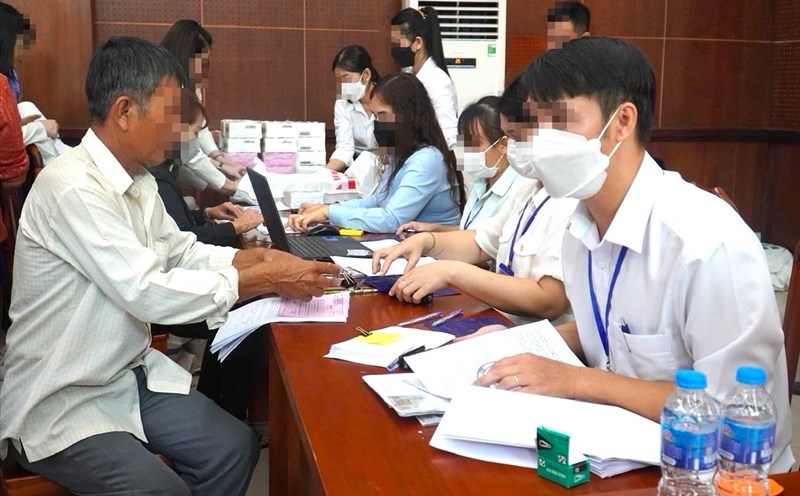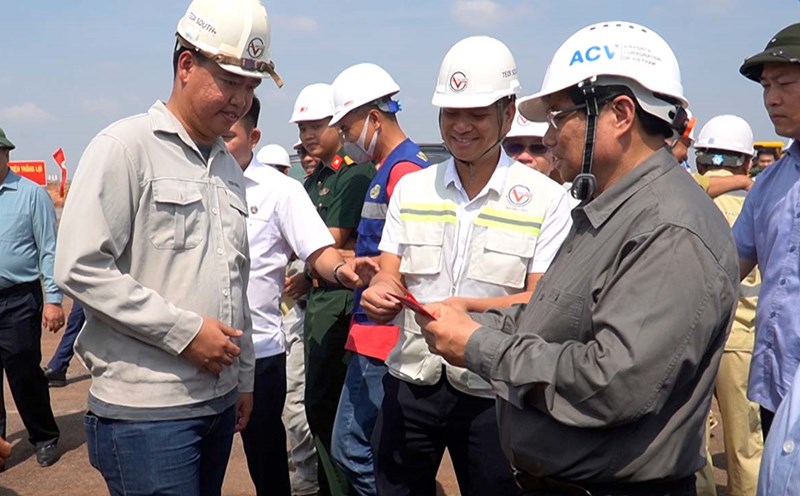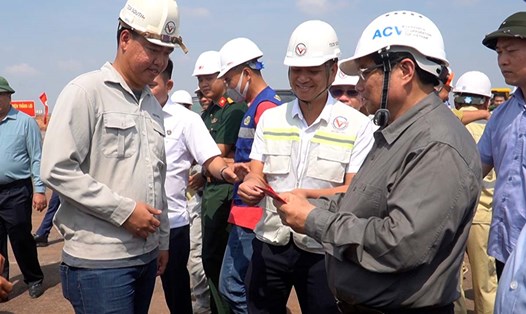On April 4, the Long Thanh Airport Project Management Board, together with the Vietur consortium, a member of the ATAD steel structure in coordination with subcontractor VSL (Switzerland), successfully upgraded the steel roof system of the Long Thanh airport passenger terminal to the top after more than 8 days, ensuring accuracy, quality, and safety.
The process of upgrading the steel roof structure of the central steel roof of Long Thanh airport with a weight of about 5,330 tons began on March 27.
According to the Long Thanh Airport Project Management Board, raising the steel roof of the central passenger terminal is a particularly important task, deciding the progress of package 5.10 - passenger terminal.
Because the central steel roof structure system has a very large weight, the raising process of units uses a combination of pulling and pushing solution using a hydraulic shock absorber system; using a computer system to monitor the load and related problems.
The roof raising is done in many steps to test the load, regulate techniques, and ensure absolute accuracy.
After successfully raising the steel roof, the units continue to focus on speeding up the construction progress and installing equipment at the Long Thanh airport passenger terminal.
The passenger terminal is the most important item in the Long Thanh airport project, deciding the progress of the entire project on the gantt road.
Currently, Long Thanh airport passenger terminal has completed the reinforced concrete structure of the underground part and floors (4 floors), is installing steel structure, glass walls, and terminal equipment; by the end of December 2025, the terminal will basically complete construction.
The roof system is divided into many large modules for assembly underground, then lifted. Each modular must be assembled accurately, ensuring no deformation when under pressure during the lifting process. The roof has a curved, wavy structure, with many layers stacked, simulating lotus petals, requiring detailed 3D modeling and accurate calculation to ensure consistency with the overall architecture. This not only requires high aesthetics but also meets the strict technical requirements of an international airport that meets 4F standards according to the International Aviation Organization (ICAO).











